 |
Java Games: Flashcards, matching, concentration, and word search. |
 |
 |
Ashurbanipal's Royal Library Terms and Facts
These activities will introduce learners to the Royal Library of Ashubanipal, the king of ancient Assyria.
Casson, L., (2001). Libraries in the ancient world. New Haven, CN: Yale University Press.
|
| A | B |
|---|
Ashurbanipal, 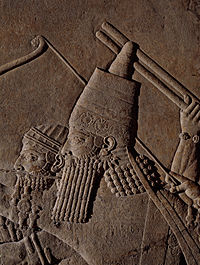 | The last important king of the Assyrian empire who reigned from 668 to 627 B.C. He boasted of having achieved the highest level in the scribal art, meaning he was the first ruler to know how to read and write. He founded an extensive personal library, housed in two of his palaces. |
cuneiform,  | A form of writing that evolved from pictograms beginning in the 4th millennia B.C. and in use until the 1st century A.D. Named for the Latin cunei, meaning wedge shaped because of the use of a stylus for inscribing its trademark wedges and lines in clay tablets. |
Nineveh,  | The ancient capital at the end of the Assyrian empire, where Ashurbanipal housed his extensive library in two of his palaces. Excavated near the modern city of Mosul, Iraq. |
Sir Austen Henry Layard, 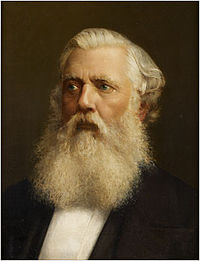 | British politician, archeologist, and cuneiformist of the 19th century. Is credited with the discovery of the Royal Library of Ashurbanipal at the excavation site of Nineveh in 1847. |
Royal Library of Ashurbanipal, 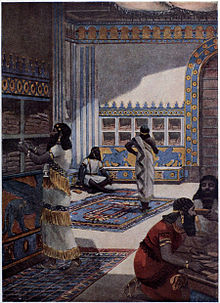 | Housed in two of the royal palaces in Nineveh, the personal library of King Ashurbanipal is the first systematically collected library. The collection was divided into rooms by subject and listed in a system of catalogues. Tablets made of clay and wood, as well as papyrus and leather scrolls, were shelved with labels and multiple volume works were noted, labeled and stored in jars on shelves. The collection included all types of works; mainly omen texts, instructional texts, then a smaller number of hymns and literature such as epics, poems and myths. |
Epic of Gilgamesh, 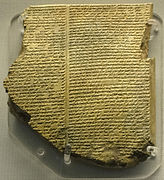 | An epic poem from ancient Mesopotamia about Gilgamesh’s quest for immortality. The oldest written copy is from the 18th century B.C., though more common versions date to the 13th century B.C. The best surviving copies were found in the excavation of the Royal Library of Ashurbanipal dating the 7th century B.C. |
| colophon | From the Greek kolophon, meaning “finishing touch.” Colophons were added to the end of a work of literature to note the author, its contents, and noted things like the end of a work or if there were multiple volumes. In the case of Ashurbanipal’s collection, colophons were added to note possession, warn borrowers and curse tablet-thieves. Lists cataloging the collection were paraphrased from the colophons on the tablets. |
| curse | Ashurbanipal had his scribes include curses in the colophons of the tablets in his library to warn thieves and guard against abuse. One example: “Clay tablet of Ashurbanipal, King of the World, King of Assyria, who trusts in Ashur and Ninlil. Your lordship is without equal, Ashur, King of the Gods! Whoever removes this tablet, writes his name in place of my name, may Ashur and Ninlil, angered and grim, cast him down, erase his name, his seed, in the land.” |
accession, 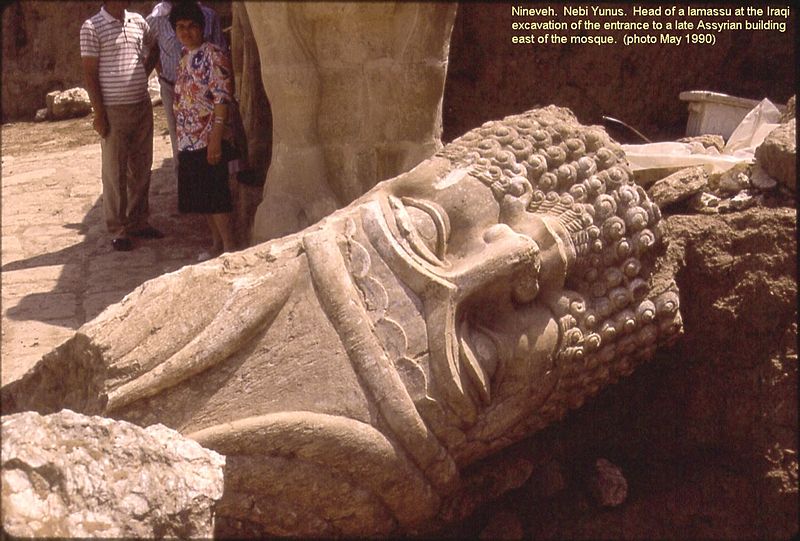 | After the defeat of Babylon in 648 B.C. by Ashurbanipal and his army, the king confiscated all the clay tablets that he wanted and added them to his personal collection. He also made requests of professionals in the defeated land to turn over any writings that were not directly related to their profession to be added and copied. Over 2,000 tablets are dated just after 647 B.C. to the time of this significant addition to the library |
| omen | The Royal library of Ashurbanipal housed all sorts of writings, but most of all were records of the results of divinations. Omen texts recorded the determination from stars and other heavenly bodies, sacrifices, and natural events of what lay in the future. The collection acted like a reference library for mystics and diviners as well as the king to check predictions. |
|
 |
 |

|
|
|
Hayden High School |
| Hayden, AL |
|
|
|
|
|
| |